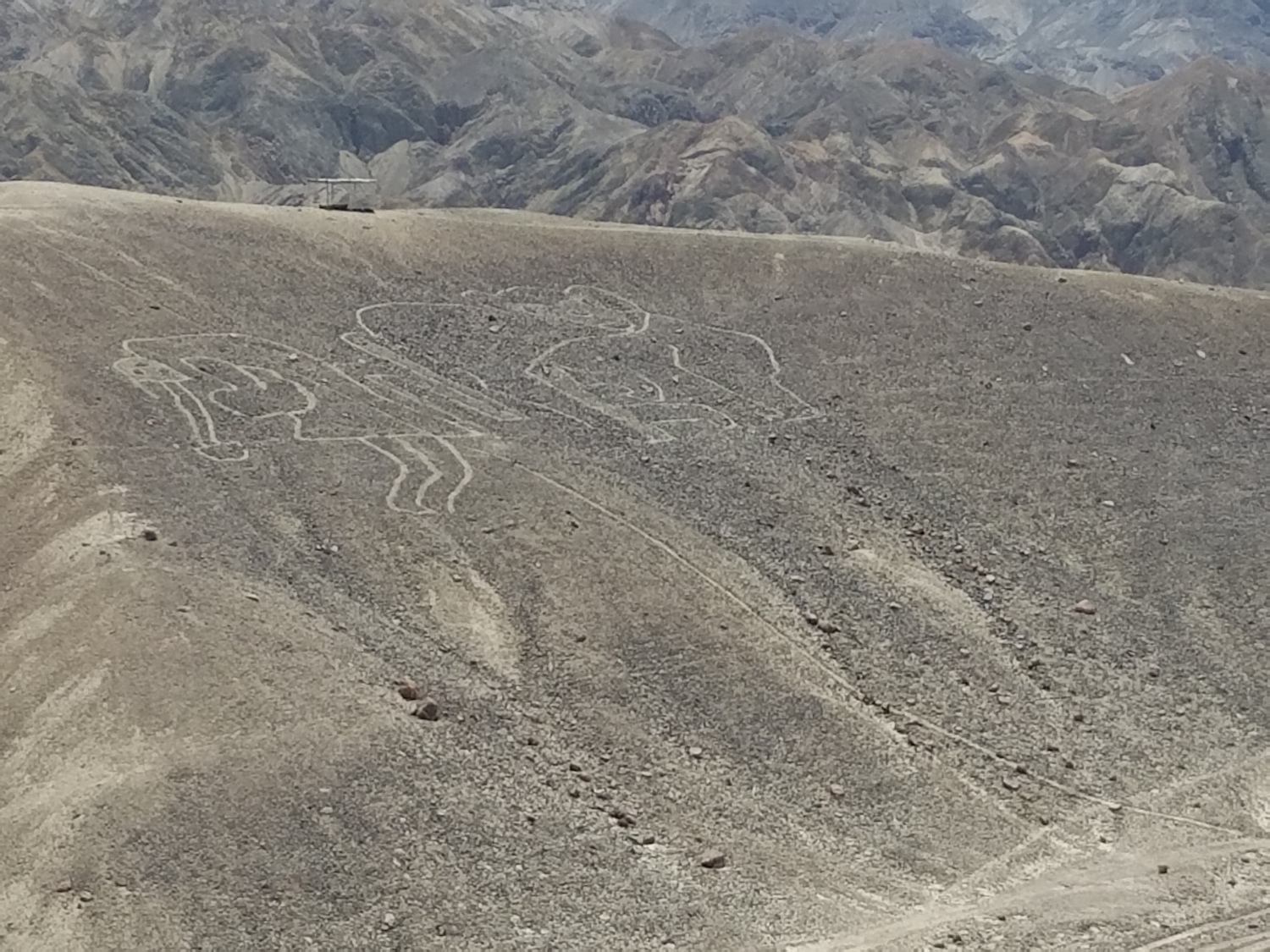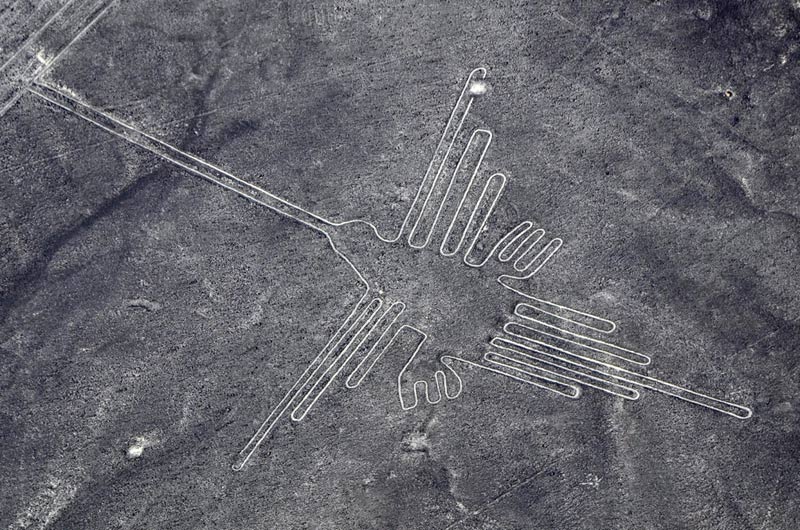Sprawling, 2,000-Year-Old Desert Carvings Show Up in Drone Photos

Drones hovering and darting over the mountainous landscape of Peru have spied some amazing ancient "artwork": previously unknown and sprawling geoglyphs called Nazca Lines that were likely made by the Nazca people and their predecessors, some as long as 2,500 years ago.
The approximately 50 newfound geoglyphs (Greek for "Earth carvings") give more evidence that the giant designs have a long history in the region and weren't just the brainchild of the Nazca culture, which flourished from A.D. 200 to 700.
"[This discovery] is really quite exciting," said Charles Stanish, executive director of the Institute for the Advanced Study of Culture and the Environment at the University of South Florida. "I've been working there for 30-some years, so it was fun to see something new," said Stanish, who visited the newly discovered lines last week but isn't involved in the new research. [Amazing Photos of the Mysterious Nazca Lines]
The newly identified ground markings are long and skinny — merely inches across and as long as a football field — and they were likely made by the Paracas and Topará cultures, which prospered from about 500 B.C. to A.D. 200, according to National Geographic, which broke the story. (The National Geographic Society funded the research.)
Ancient lines
Modern researchers have known about Peru's Nazca (also spelled Nasca) Lines since 1927, when Peruvian archaeologist Toribio Mejía Xesspe came across them on foot. Soon after, the area became a tourist hotspot as airplane pilots began to purposefully fly over the etchings, giving their passengers a bird's-eye view of the geometric shapes and ancient figures, including those of a spider, a hummingbird, a monkey, a lizard and even a pelican, Live Science previously reported.
It's unclear why the Nazca made these lines, but some theories put forth by archaeologists suggest that the lines may represent constellations in the night sky, that perhaps they played a role in pilgrimage or that the lines were part of water-based rituals for the Nazca, who had figured out how to irrigate the dry desert, Live Science has reported.
Archaeologists found the "new" lines in Peru's Palpa province. The seeds to the discovery were planted in December 2014, when the environmental organization Greenpeace placed a huge sign calling for renewable energy next to the Nazca hummingbird design, National Geographic reported. Greenpeace didn't have permission to enter the World Heritage Site and ended up damaging it.
Get the world’s most fascinating discoveries delivered straight to your inbox.
Following the incident (for which Greenpeace later apologized), Peru received a grant from the United States to help restore its archaeology by hiring Peruvian archaeologist Johny Isla, the Nasca Lines' chief restorer and protector, National Geographic said. Given that not all of Peru's archaeological sites have been mapped from the air, Isla and Peruvian archaeologist Luis Jaime Castillo Butters, of the Pontifical Catholic University of Peru, who co-discovered the new glyphs, partnered with Sarah Parcak, a space archaeologist and founder of the Laboratory for Global Observation at the University of Alabama at Birmingham, to do so.
Parcak uses aerial photography from drones and satellites to discover and examine archaeological sites. For instance, satellite imagery helped Parcak and her colleagues find potential Viking sites in Newfoundland, Canada, in 2016, Live Science previously reported.
In Peru, Parcak's team used drones, which took images in 2017 that helped the archaeologists discover the new lines.
Human figures
Many of the newly found markings portray human figures, including warriors, and are a bit smaller than other Nazca lines, Stanish told Live Science. [Gallery: Aerial Photos Reveal Mysterious Stone Structures]
Moreover, "the Nazca Lines are all on the flats, and most of the Paracas ones seem to be up in the hilly parts," Stanish said. Perhaps, people in towns below these hills could see them, he said.
The Paracas culture, which emerged about 800 B.C., was ruled by priests, Johny Isla, who is also the head of Peru's Ministry of Culture in Ica province, previously told Live Science. The Paracas also constructed pyramids and made key advances in the production of ceramics and textiles.
In 2015, Isla rediscovered a Paracas geoglyph of a killer whale that had originally been found in the 1960s but couldn't be found again until Isla began researching it.
Archaeologists hope to preserve all of the Peruvian geoglyphs, including the newfound ones, as more people move to the area.
"The lines are being destroyed," Stanish said. "Peru has a booming economy."
Original article on Live Science.

Laura is the managing editor at Live Science. She also runs the archaeology section and the Life's Little Mysteries series. Her work has appeared in The New York Times, Scholastic, Popular Science and Spectrum, a site on autism research. She has won multiple awards from the Society of Professional Journalists and the Washington Newspaper Publishers Association for her reporting at a weekly newspaper near Seattle. Laura holds a bachelor's degree in English literature and psychology from Washington University in St. Louis and a master's degree in science writing from NYU.



